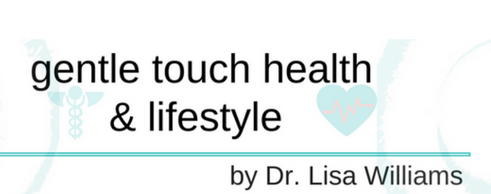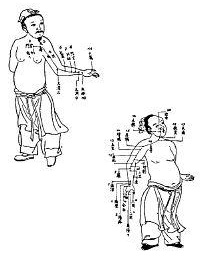Treatment
Lisa’s acupuncture treatments are specific to the needs of each individual. The first session, which includes evaluation and treatment, is typically one and halfhours and subsequent visits, if necessary, are usually one hour each. Both the issues to be addressed and the treatment methods to be used are explored and agreed upon before each session.
Lisa draws on her vast experiences and education of healing disciplines for each session. Her patient’s have found relief from emotional and physical imbalances that have interfered with their enjoyment of life.
Conditions
Some of the health problems successfully treated by Lisa include, but not limited, to:
Various types of pain (acute/chronic): sport injuries, orthopedic issues, musculoskeletal problems, tennis elbow, fibromyalgia, muscle tension/spasm, arthritis, chronic fatigue syndrome, headaches, sinus pain, migraines, neck pain, back pain, knee pain, spinal problems, sciatica, joint pain, TMJ (temporomandibular joint), carpal tunnel syndrome, and facial pain
Stress management: stress, depression, anxiety, fears, and panic attacks
Digestive problems: abdominal pain, colitis, stomach pain, IBS, diarrhea, constipation, gas, bloating, belching, acid reflux, ulcerative colitis, and controlling common side effects of chemotherapy
Pediatric problems: anxiety, stress, allergies, bed-wetting, ear infections, constipation, digestive problems, neurological and orthopedic problems
Respiratory problems: asthma, colds, flu, allergies, and breathing difficulties
Skin problems: acne, scars, and rashes
Sleeping problems: insomnia, restless sleep, nightmares
Thyroid problems: overproduction of thyroid hormone (hyperthyroidism) and underproduction of thyroid hormone (hypothyroidism)
Women's health: amenorrhea, menopause, menstrual disorders, infertility, PMS (cramps, irritability, etc.), and irregular cycle
In addition, acupuncture textbooks list over one hundred different conditions that respond well to acupuncture and according to The World Health Organization (WHO) acupuncture has much broader applications beyond pain relief. The WHO recognizes the use of acupuncture for the following indications:
Diseases, symptoms or conditions for which acupuncture has been proved -through controlled trials—to be an effective treatment:
Adverse reactions to radiotherapy and/or chemotherapy
Allergic rhinitis (including hay fever)
Biliary colic
Depression (including depressive neurosis and depression following stroke)
Dysentery, acute bacillary
Dysmenorrhoea, primary
Epigastralgia, acute (in peptic ulcer, acute and chronic gastritis, and gastrospasm)
Facial pain (including craniomandibular disorders)
Headache
Hypertension, essential
Hypotension, primary
Induction of labour
Knee pain
Leukopenia
Low back pain
Malposition of fetus, correction of
Morning sickness
Nausea and vomiting
Neck pain
Pain in dentistry (including dental pain and temporomandibular dysfunction)
Periarthritis of shoulder
Postoperative pain
Renal colic
Rheumatoid arthritis
Sciatica
Sprain
Stroke
Tennis elbow
Diseases, symptoms or conditions for which the therapeutic effect of acupuncture has been shown but for which further proof is needed:
Abdominal pain (in acute gastroenteritis or due to gastrointestinal spasm)
Acne vulgaris
Alcohol dependence and detoxification
Bell’s palsy
Bronchial asthma
Cancer pain
Cardiac neurosis
Cholecystitis, chronic, with acute exacerbation
Cholelithiasis
Competition stress syndrome
Craniocerebral injury, closed
Diabetes mellitus, non-insulin-dependent
Earache
Epidemic haemorrhagic fever
Epistaxis, simple (without generalized or local disease)
Eye pain due to subconjunctival injection
Female infertility
Facial spasm
Female urethral syndrome
Fibromyalgia and fasciitis
Gastrokinetic disturbance
Gouty arthritis
Hepatitis B virus carrier status
Herpes zoster (human (alpha) herpesvirus 3)
Hyperlipaemia
Hypo-ovarianism
Insomnia
Labour pain
Lactation, deficiency
Male sexual dysfunction, non-organic
Ménière disease
Neuralgia, post-herpetic
Neurodermatitis
Obesity
Opium, cocaine and heroin dependence
Osteoarthritis
Pain due to endoscopic examination
Pain in thromboangiitis obliterans
Polycystic ovary syndrome (Stein–Leventhal syndrome)
Postextubation in children
Postoperative convalescence
Premenstrual syndrome
Prostatitis, chronic
Pruritus
Radicular and pseudoradicular pain syndrome
Raynaud syndrome, primary
Recurrent lower urinary-tract infection
Reflex sympathetic dystrophy
Retention of urine, traumatic
Schizophrenia
Sialism, drug-induced
Sjögren syndrome
Sore throat (including tonsillitis)
Spine pain, acute
Stiff neck
Temporomandibular joint dysfunction
Tietze syndrome
Tobacco dependence
Tourette syndrome
Ulcerative colitis, chronic
Urolithiasis
Vascular dementia
Whooping cough (pertussis)
Diseases, symptoms or conditions for which there are only individual controlled trials reporting some therapeutic effects, but for which acupuncture is worth trying because treatment by conventional and other therapies is difficult:
Chloasma
Choroidopathy, central serous
Colour blindness
Deafness
Hypophrenia
Irritable colon syndrome
Neuropathic bladder in spinal cord injury
Pulmonary heart disease, chronic
Small airway obstruction
Diseases, symptoms or conditions for which acupuncture may be tried provided the practitioner has special modern medical knowledge and adequate monitoring equipment:
Breathlessness in chronic obstructive pulmonary disease
Coma
Convulsions in infants
Coronary heart disease (angina pectoris)
Diarrhoea in infants and young children
Encephalitis, viral, in children, late stage
Paralysis, progressive bulbar and pseudobulbar
Reference
World Health Organization (WHO). (2003). Retrieved from: http://www.evidencebasedacupuncture.org/who-official-position/
917-375-4641 Call now!
"H-INVESTMENTS" CAN MAKE A HEALTHIER YOU


